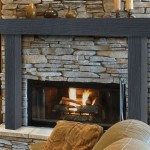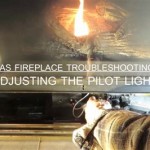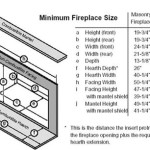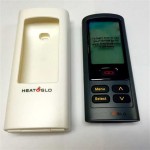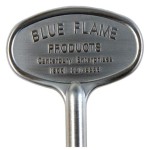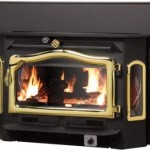Fixing a Gas Fireplace Thermocouple: A Comprehensive Guide
A gas fireplace provides warmth and ambiance in a home, particularly during colder months. A crucial component of its safe and reliable operation is the thermocouple. The thermocouple is a safety device that senses the pilot light flame and allows the main gas valve to remain open. When the pilot light is extinguished, the thermocouple cools down, shutting off the gas supply to prevent a potentially dangerous gas leak. If a gas fireplace repeatedly fails to stay lit, or if the pilot light goes out frequently, a faulty thermocouple is a likely culprit. This article provides a detailed guide on how to diagnose and fix a gas fireplace thermocouple.
Understanding the function and location of the thermocouple is paramount before attempting any repair. The thermocouple is typically a slender rod, often made of copper or a similar alloy, positioned directly in the path of the pilot light flame. It's connected to the gas valve via a thin copper tube. When the pilot light is lit, the flame heats the thermocouple, generating a small electrical current. This current signals the gas valve to remain open, allowing gas to flow to both the pilot light and the main burner. Without a functioning thermocouple, the gas valve will automatically shut off after a brief period, typically a few seconds to a minute, resulting in the pilot light extinguishing.
Safety is of utmost importance when working with gas appliances. Before beginning any troubleshooting or repair, ensure the gas supply to the fireplace is completely shut off. Locate the gas shut-off valve, usually positioned near the fireplace or along the gas line leading to it, and turn it to the "off" position. Allow ample time for the gas to dissipate before proceeding. Disconnecting the electrical power to the fireplace, if applicable, is also recommended.
Identifying a Faulty Thermocouple
Several symptoms indicate a potential thermocouple issue. The most common sign is the pilot light going out shortly after being lit. If the pilot light ignites but fails to stay lit after releasing the gas control knob, the thermocouple is highly suspect. Another indication is difficulty lighting the pilot light initially, even after holding the gas control knob in for an extended period. Finally, if the pilot light flame appears weak or intermittent, even when the thermocouple is supposedly heated, it may suggest a problem with the thermocouple's ability to generate sufficient electrical current.
A visual inspection of the thermocouple is a crucial first step in diagnosing the problem. Examine the thermocouple for any signs of physical damage, such as cracks, corrosion, or bending. Check the connections between the thermocouple, the gas valve, and the pilot light assembly. Ensure the connections are clean and tight. Corrosion can impede the electrical connection, preventing the thermocouple from functioning correctly. Use a wire brush or fine-grit sandpaper to clean corroded connections, ensuring they are free of debris.
A multimeter can be used to test the thermocouple's functionality. A multimeter is an electronic measuring instrument used to measure voltage, current, and resistance. To test the thermocouple, set the multimeter to the millivolt (mV) setting. Disconnect the thermocouple from the gas valve. Connect the multimeter leads to the thermocouple's terminals. Using a lighter or small torch, heat the tip of the thermocouple. A functioning thermocouple should generate a millivolt reading within the manufacturer's specified range, typically between 20 and 30 mV. A reading significantly below this range indicates that the thermocouple is faulty and needs replacement.
Replacing a Gas Fireplace Thermocouple
Replacing a thermocouple is a straightforward process, but it requires attention to detail and adherence to safety precautions. Before starting, obtain a replacement thermocouple that is compatible with the specific gas fireplace model. The manufacturer's specifications or the fireplace's owner's manual will provide the necessary information to identify the correct replacement part. Using the wrong type of thermocouple can lead to malfunctions or safety hazards.
Begin by carefully disconnecting the old thermocouple from the gas valve. Typically, the thermocouple is connected to the gas valve with a threaded fitting. Use a wrench to loosen and remove the fitting, taking care not to damage the gas valve or the surrounding components. Disconnect the other end of the thermocouple from the pilot light assembly. This connection often involves a clip or a similar fastener. Carefully detach the thermocouple from the pilot light assembly.
Install the new thermocouple by reversing the removal process. Connect the thermocouple to the pilot light assembly, ensuring the connection is secure. Attach the other end of the thermocouple to the gas valve, tightening the threaded fitting securely but not overtightening it. Overtightening the fitting can damage the gas valve or the thermocouple. Ensure the thermocouple is positioned correctly within the pilot light flame path. The tip of the thermocouple should be directly exposed to the flame.
Before relighting the pilot light, perform a leak test on the gas connections. Prepare a solution of soapy water and apply it to all gas connections, including the thermocouple connection at the gas valve. Turn the gas supply back on and observe the connections for any bubbles. Bubbles indicate a gas leak. If a leak is detected, immediately turn off the gas supply and tighten the connection further. Repeat the leak test until no leaks are present.
Troubleshooting Common Problems After Replacement
Even after replacing the thermocouple, issues can still arise. If the pilot light continues to go out, the problem may not be the thermocouple itself, but rather other related components. A dirty or clogged pilot light orifice can restrict gas flow to the pilot light, resulting in a weak flame that cannot adequately heat the thermocouple. Clean the pilot light orifice with a small wire or a specialized pilot light cleaning tool. Be careful not to enlarge the orifice, as this can affect the flame characteristics.
Another potential problem is a faulty gas valve. If the gas valve is not functioning correctly, it may not be allowing sufficient gas to flow to the pilot light, even with a functioning thermocouple. Testing the gas valve requires specialized knowledge and tools. Consulting a qualified gas appliance technician is recommended in this case.
The pilot light assembly itself can also be a source of problems. A damaged or misaligned pilot light assembly can prevent the pilot light flame from properly heating the thermocouple. Inspect the pilot light assembly for any signs of damage or misalignment. Ensure the pilot light flame is correctly positioned to impinge directly on the thermocouple.
In some instances, the problem may be related to the gas supply pressure. If the gas pressure is too low, it may not be sufficient to maintain a stable pilot light flame. A gas pressure test requires specialized equipment and should be performed by a qualified technician. Low gas pressure can also indicate other issues within the gas supply system, such as a faulty regulator or a blockage in the gas line.
After addressing any potential issues, relight the pilot light according to the manufacturer's instructions. Hold the gas control knob in while igniting the pilot light. Continue holding the knob in for the recommended time, typically 20-30 seconds, to allow the thermocouple to heat up and generate sufficient electrical current. If the pilot light stays lit after releasing the knob, the thermocouple is functioning correctly. Observe the fireplace for a period to ensure the pilot light remains stable and the main burner ignites properly.
If the problem persists after replacing the thermocouple and troubleshooting other potential issues, seeking professional assistance is advisable. A qualified gas appliance technician has the expertise and equipment to diagnose and repair complex fireplace problems safely and effectively. Attempting to repair a gas appliance without the necessary knowledge and experience can be dangerous and may void the warranty.
Regular maintenance is crucial for ensuring the safe and reliable operation of a gas fireplace. Schedule annual inspections and cleaning by a qualified technician. Regular maintenance can prevent potential problems from developing and ensure the fireplace operates efficiently and safely. Keep the area around the fireplace clear of combustible materials, such as curtains and furniture. This helps prevent fire hazards and ensures adequate ventilation for the fireplace.

Gas Fireplace Won T Stay Lit Magic Touch Mechanical

How A Pilot Light Works Www Mygasfireplacerepair Com

Gas Fireplace Won T Stay Lit Magic Touch Mechanical

Fireplace Won T Stay Lit This Is How You Fix It

Gas Fireplace Won T Stay Lit R Fixit

How To Test Your Thermopile Www Mygasfireplacerepair Com

Diy Gas Fireplace Repair No Flame Problem Remodeling Cost Calculator

Know How To Replace A Gas Fireplace Thermocouple

If Your Gas Fireplace Keeps Shutting Off Take These Steps

Lofailure Safety Control Kit Gas Heater Thermocouple Replacement 5 8 18unf O6q6
Related Posts


